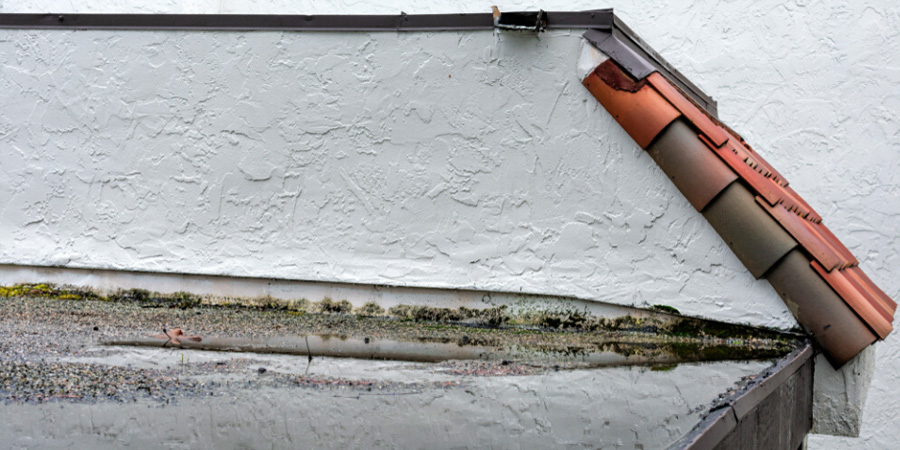The most common problem that people with flat roofs deal with is a leak. Flat roofs are at a disadvantage when it comes to water-related problems on roofs. While the sloped residential roofs send water directly to the gutter systems, the commercial flat roofs allow the water to settle and find an opening on the roof.
If you suspect a leak in your roof, make sure to contact a professional roofer to perform a thorough inspection to find the leak and determine the reason behind it. Here are some reasons that your hired professional roofer may tell you are responsible for the leak on your roof.
Damaged Flashing
A large number of commercial roof leaks are often associated with flashing, which is installed on the outside edges of the roof and on the inside walls to guard the roof membrane. If the flashing isn’t installed correctly or is broken by wind or temperature changes, then the sides of the roof cover are exposed. And water can then seep into the roofing system.
Open Penetrations
Commercial roofs have several penetrations like HVAC units, drains, pipes, and vents, which must undergo the roofing membrane. Penetrations are vulnerable to leaks and must be secured to avoid damage. Any penetrations should be inspected periodically to make sure they continue to be water-tight with the right pitch pans, rain collars, and flashings.
Damaged Roof Membrane
The roof membrane protects the inside of the building from water. In older membranes, the insulation of the roof is exposed, giving the water an unblocked path inside. This can cause the membrane to crack, shrink, blister, or puncture over time. If the damage is caught early enough, it’s going to be possible to repair the roof membrane, but a membrane that has reached the top of its life expectancy will have to be completely replaced.
Standing Water
When water stays on your flat roof for quite over 48 hours, you’ve got a drainage problem. Each sq ft of standing water weighs approximately five pounds. Having a 20-foot by 20-foot pond of water that’s only one inch deep strains your building’s roof. Additionally, to the load risk related to ponding water on a roof, ponding water also can cause leaks, the rot of the roof membrane, algae growth, and damage to the reflective coating.
Ponding water is usually caused by incorrect slopes, sagging roofs, or drain clogs. If you don’t act quickly once you notice ponding water, leaks will occur quickly.

